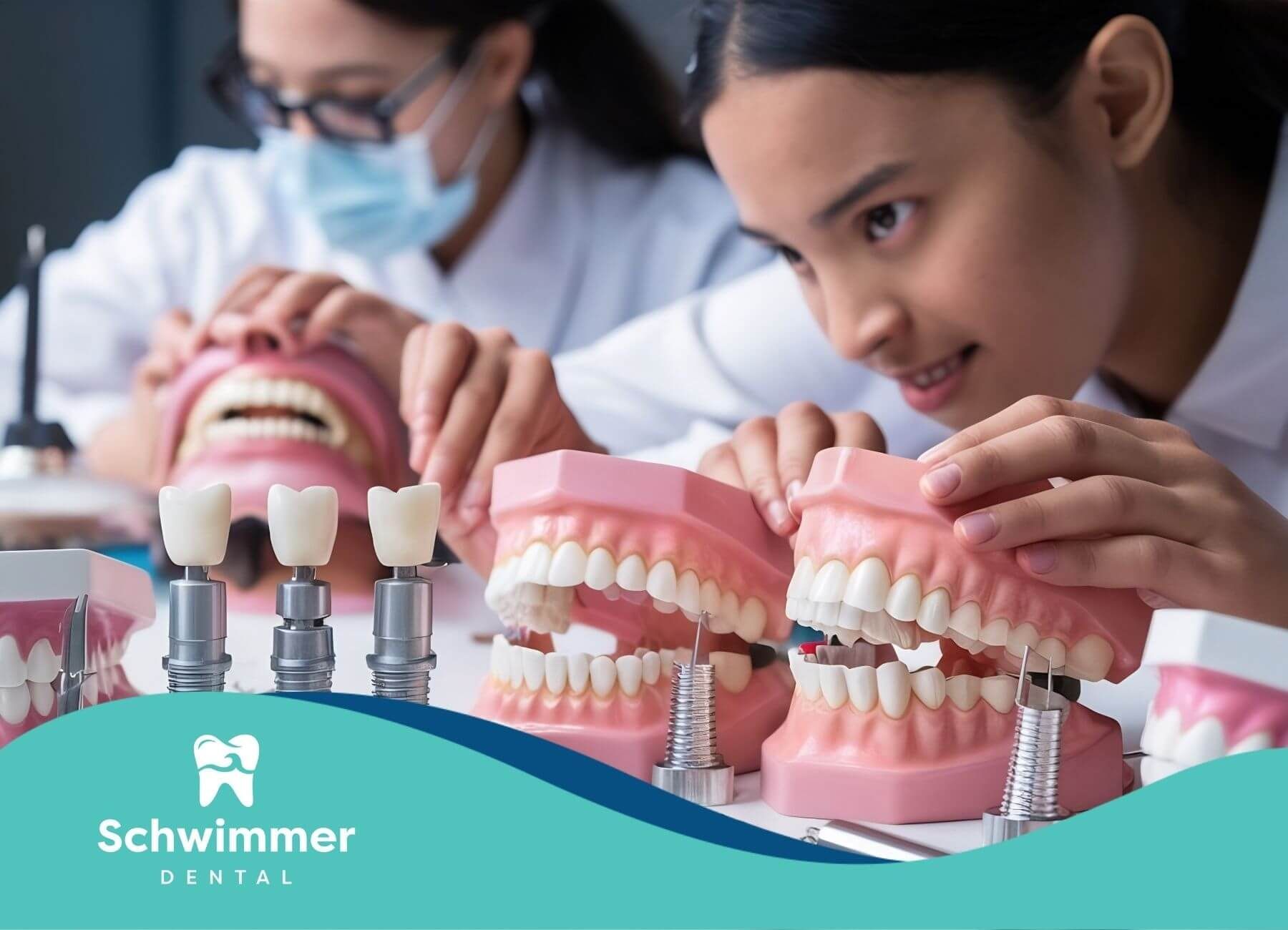Retainer Types Compared: Hawley, Essix, and Permanent Options
Completing orthodontic treatment is a major milestone. Whether you wore braces for two years or finished a series of clear aligners, there’s nothing quite like seeing your straight, healthy smile in the mirror.
But here’s something many patients don’t expect: the work isn’t finished once the braces come off.
To keep your teeth in their new positions, you’ll need a retainer. In fact, the American Association of Orthodontists (AAO) stresses that retainers are just as important as braces or aligners themselves. Without them, your teeth will almost certainly begin to drift back toward their old positions—a process called relapse.
Over the years, several types of retainers have been developed, each with its own benefits and challenges. As a dentist, I’m often asked: “Which retainer is the best one?” The answer depends on your smile, your treatment, and your lifestyle.
In this guide, we’ll break down:
- Why retainers are essential
- The three main types of retainers
- Pros and cons of each
- How to care for them properly
- What happens if you stop wearing them
By the end, you’ll have the knowledge to make the best decision for protecting your new smile.
Why Retainers Matter
When orthodontic treatment ends, your teeth aren’t permanently “locked” into place. Bone, gum tissue, and ligaments need time to stabilize around their new alignment. Without something to hold them steady, your teeth will begin to shift.
Studies published in the American Journal of Orthodontics and Dentofacial Orthopedics show that relapse can begin within weeks if a retainer isn’t worn. This is why orthodontists emphasize retention just as much as active treatment. Think of it this way: braces straighten your teeth, but retainers keep them straight.
The Three Main Types of Retainers
1. Hawley Retainers (Traditional Wire Retainers)
What They Are:
The
Hawley retainer is the original design, created in the early 1900s. It combines an acrylic base that sits against the roof of your mouth (or behind your lower teeth) with a thin metal wire that rests along the front of your teeth.
Pros:
- Highly durable and long-lasting.
- Adjustable—your dentist can tighten or reshape it to improve fit.
- Allows some natural contact between upper and lower teeth.
- Easy to clean since it’s removable.
Cons:
- More visible compared to clear retainers.
- May initially feel bulky or affect speech.
- Less popular with patients who want something discreet.
Best For: Patients who want durability and don’t mind visibility. It’s also a great choice for younger patients who may lose or damage plastic retainers more easily.
2. Essix Retainers (Clear Plastic Retainers)
What They Are:
Essix retainers are transparent, thin plastic trays that fit snugly over your teeth—similar in appearance to
Invisalign aligners. They’ve become increasingly popular due to their discreet look.
Pros:
- Nearly invisible, making them cosmetically appealing.
- Comfortable and lightweight.
- Easy to remove when eating or brushing.
Cons:
- Less durable than Hawley retainers—plastic may crack or wear down.
- Cannot be adjusted if teeth shift.
- Can trap moisture if not cleaned properly, leading to odor.
- More prone to staining if exposed to coffee, tea, or certain foods.
Best For: Patients who prioritize appearance and comfort, or those who had Invisalign treatment and prefer a similar feel.
3. Permanent Retainers (Bonded or Fixed Retainers)
What They Are:
A
permanent retainer is a thin wire bonded to the back of the teeth, usually on the lower front arch. Unlike removable options, it stays in place around the clock and cannot be taken out by the patient.
Pros:
- Always working—no risk of forgetting to wear it.
- Completely invisible from the front.
- Excellent at preventing relapse, especially for lower front teeth which tend to shift the most.
Cons:
- Cleaning can be tricky; requires floss threaders or water flossers.
- May occasionally come loose, requiring repair.
- Not suitable for every patient or every bite type.
Best For: Patients prone to relapse or those who want a “set it and forget it” solution. Commonly recommended after more severe orthodontic cases.
Which Retainer Is Best for You?
Choosing the right retainer depends on several factors:
- Lifestyle: If you’re likely to forget, a permanent retainer may be safest. If you prefer flexibility, removable may work better.
- Aesthetics: Clear Essix retainers are virtually invisible, while Hawley retainers are more noticeable.
- Durability: Hawley retainers typically last longer, but permanent retainers can provide stability for years if properly maintained.
- Cost: Essix retainers are usually less expensive upfront, but since they wear out more quickly, replacement costs can add up.
Many orthodontists recommend a combination: a bonded retainer on the lower teeth and a removable retainer for the upper teeth. This offers both security and flexibility.
How to Care for Your Retainer
No matter which retainer you use, proper care is essential:
Clean Daily:
- Removable: Rinse after meals, brush gently with a soft toothbrush and mild soap.
- Avoid toothpaste on clear retainers—it can scratch the plastic.
- Permanent: Use floss threaders or a water flosser to clean around the wire.
Store Properly:
- Always place removable retainers in a case when not in use.
- Never wrap in napkins—they often get thrown away accidentally.
Avoid Heat:
- Keep retainers away from hot water, dishwashers, or car dashboards, which can warp them.
- Bring your retainer to visits so your dentist can check for wear, cracks, or loose bonding.
What Happens If You Stop Wearing Your Retainer?
Without consistent wear, teeth naturally shift back toward their original positions. This can undo months or years of orthodontic work. Some patients notice small changes in weeks, while others may see significant movement over several months.
In severe cases, retreatment with braces or aligners may be necessary to correct relapse. That’s why I always tell patients: “Think of your retainer as insurance for your smile.”
Final Thoughts
Retainers are the unsung heroes of orthodontics. While braces and aligners do the heavy lifting, retainers ensure the results last a lifetime. Hawley retainers, Essix retainers, and permanent retainers each have unique benefits—and the right one for you depends on your lifestyle, needs, and goals.
If you’re in New Jersey and need a new retainer, have lost yours, or want advice on which type is right for you, Schwimmer Dental is here to help.
We provide expert orthodontic aftercare along with cosmetic dentistry, emergency services, veneers, implants, and comprehensive dental care. Protect your smile by trusting one of the best dental teams in New Jersey.
FAQs
What are the different types of retainers?
The three main types are Hawley retainers (wire and acrylic), Essix retainers (clear plastic), and permanent or bonded retainers fixed behind the teeth.
How long do I need to wear a retainer?
According to the American Association of Orthodontists, retainers are often needed for life. At minimum, they must be worn consistently for several years after treatment.
Which retainer is the best?
The best retainer depends on your needs. Hawley retainers are durable, Essix retainers are discreet, and permanent retainers offer 24/7 stability without daily effort.
Sources:
- https://www.medicalnewstoday.com/articles/permanent-retainer
- https://www.webmd.com/oral-health/what-to-know-about-permanent-retainers
- https://www.healthline.com/health/retainer-types
- https://my.clevelandclinic.org/health/treatments/10899-teeth-retainer
- https://www.invisalign.com/resources/retainers/hawley-retainers-pros-and-cons
- https://www.colgate.com/en-us/oral-health/adult-orthodontics/what-is-an-essix-retainer



